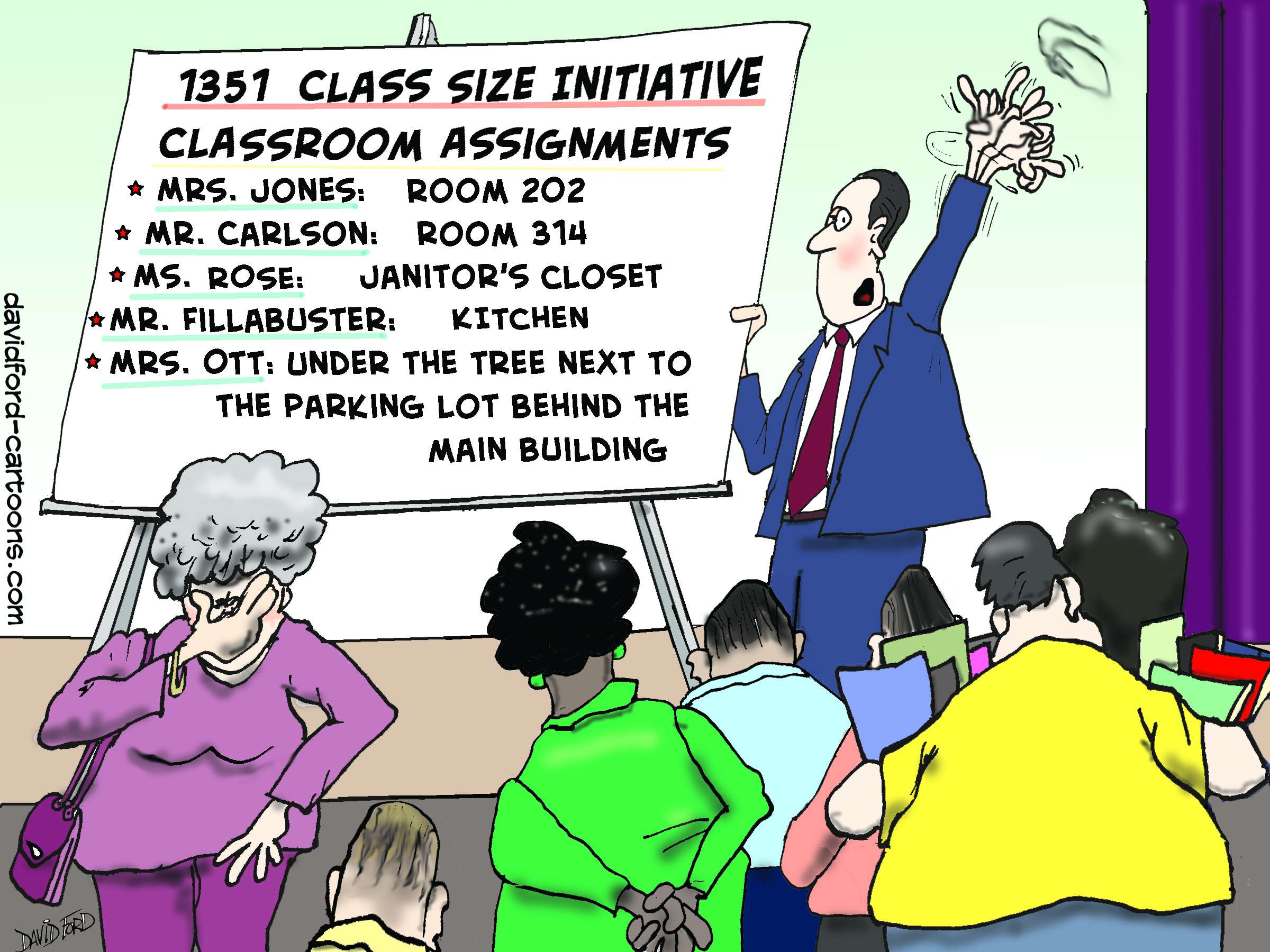
Initiative 1351
If you’re reading this blog, you’re probably already familiar with Initiative 1351, which is designed to reduce class size. AWSP has long advocated for new revenue and supported legislation to lower class size, but this ballot measure has too many implementation issues and is not the best way to increase student achievement for all kids, which is why the AWSP board voted to opposed it.
We believe that new revenue and lower class sizes are needed, but this initiative would tie districts’ hands and eliminate any discretion in how best to increase student achievement. Members of the AWSP board cited these specific concerns with I–1351:
Funding: There is no funding source for I–1351. The Governor’s Office projects a $4.7B cost at full implementation. Implications include:
-
Lack of Facilities: The initiative provides no capital budget assistance to increase capacity for more classrooms, yet most school districts lack the physical space needed for the additional classrooms required under I–1351. Many districts don’t have the space to add more portables.
-
Pressure on Local Funds: On average, districts are paying $12,000 of a teacher’s salary out of local funds while the state pays the rest. The Supreme Court ordered the Legislature to fix this under McCleary, but there is no plan in place yet. An additional $1B in local money would be needed to pay for the staff salaries necessary for implementation, according to the Washington Association of School Administrators.
-
Limited Flexibility on Spending: Our ultimate goal is to increase student achievement. Reducing class size is only one piece of that puzzle. Restricting revenue to the addition of teachers and staff leaves little to supply the other pieces. Current law already calls for reduced class sizes by 2018.
Shortage of High-Quality Teachers: According to the Governor’s Office, the initiative would require adding 7,000 teachers and 17,000 non-teaching positions to our schools at full implementation. While Washington has a very strong and accomplished teaching force, districts are already having trouble hiring great teachers. The Professional Educators Standards Board estimates the total new teachers in the pipeline at about 4,000, far short of the number needed to reach the initiative’s class size targets.
Inconclusive Research for Grades 4–12: The Washington State Institute for Public Policy aggregated the results of 53 studies, finding class size reductions in K–3 offer roughly twice the value in kindergarten and first grade than at upper grade levels. The research for lowering class size is inconclusive for grades 4–12; however, there are many research-supported strategies to raise student achievement districts could implement if the initiative allowed money to be used in other ways.
Principals want lower class sizes, but they know that quality trumps quantity when it comes to their teaching staff. Given all of the pressures on teachers today to learn how to translate new standards into their teaching, utilize technology effectively and ensure that all students are achieving at high levels, simply finding more teachers to add to the school is less important than providing the existing teachers the additional time, training, and classroom resources necessary to be successful.
Do we need additional, new revenue in our schools? Yes.
Do we want all students to have smaller class sizes? Yes.
Is Initiative 1351 the best way to increase student achievement? No.
Read our statement to our members:
AWSP Statement on Initiative 1351
The Association of Washington School Principals has a long and well-established history of supporting increased funding for public schools and smaller class sizes. The association has actively advocated for new revenue with the landmark McCleary school funding lawsuit and supported various pieces of legislation (including SHB 2776) to lower Washington’s K–12 class sizes. Both McCleary and the bills approved by the Legislature grant schools and districts flexibility in using new revenue when it comes to enhancing student achievement.
On Sept. 25, the AWSP Board of Directors voted to oppose Initiative 1351, a class-size reduction measure on the November ballot. In their discussion about I–1351, the board outlined a number of concerns, including the fundamental concern that the measure lacks a dedicated funding source. Should funding be provided, the board felt I–1351’s prescriptive funding formula does not give school districts the flexibility to apply resources where they are needed most.
AWSP board members — representing elementary, middle and high school principals from around the state — also cited serious concerns about schools and districts that would not qualify for all available funding simply because they lack the facilities or physical space to add classrooms.
While AWSP believes class size is an important factor in K–12 student learning and that new revenue is needed for K–12 education, this initiative lacks a funding source and limits the paths districts can take to increase student achievement. For these primary reasons, AWSP is opposed to Initiative 1351. For additional information about AWSP’s position on I–1351, contact Jerry Bender, AWSP Director of Governmental Relations, at 360.357.7951 or jerry@awsp.org.
Learn more about I–1351 and read what others are saying about this initiative: